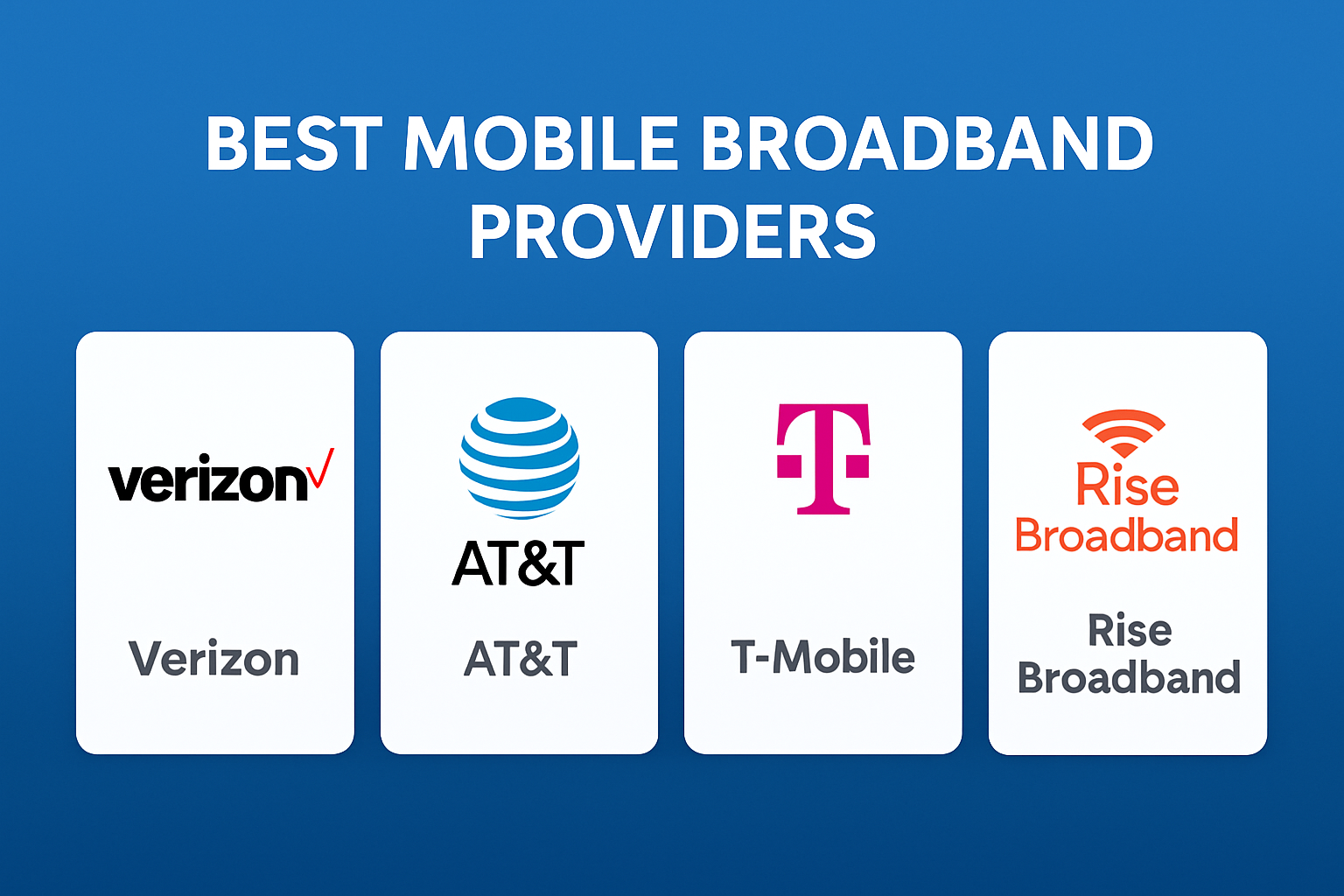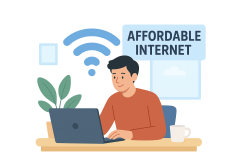Best Mobile Broadband Providers: Stay Connected Anytime, Anywhere

Having reliable mobile broadband is no longer a luxury — it’s a necessity. Whether you’re working remotely, streaming HD videos, gaming on the go, or connecting smart devices, a fast and stable mobile broadband connection keeps everything running smoothly.
With so many providers offering different speeds, coverage, and pricing, choosing the best one can be overwhelming. This guide breaks down the top mobile broadband providers, their standout features, and what makes each one worth considering.
Why Mobile Broadband Matters
Mobile broadband continues to revolutionize how we stay connected. Unlike traditional home broadband that relies on cables or fiber, mobile broadband uses cellular networks like 4G, 5G, and emerging next-gen technologies to deliver high-speed internet anywhere there’s coverage.
Perfect for travelers, remote workers, and households without access to wired connections, mobile broadband offers flexibility, portability, and freedom — essential in today’s connected world.
Key Factors to Consider Before Choosing a Provider
Before you sign up, here’s what to look for when choosing a mobile broadband service:
Coverage & Reliability: Check 4G/5G coverage maps in your area to ensure consistent connectivity.
Speed: Look for high-speed networks that deliver stable performance for your needs.
Data Allowance: Choose between unlimited plans or flexible data caps based on your usage.
Pricing & Value: Compare plan inclusions like data rollover, hotspot usage, or discounts for bundled services.
Customer Support: Responsive and easy-to-reach support can save you from frustration when technical issues arise.
Top Mobile Broadband Providers
1. Verizon
Coverage and Speed:
Verizon remains a leader with nationwide 5G Ultra Wideband coverage and expanding next-gen network testing. It’s ideal for high-data users and professionals who rely on stable, high-speed internet.
Plans and Pricing:
Expect competitive unlimited data options, mobile hotspot add-ons, and bundle discounts for existing Verizon customers.
Customer Support:
24/7 customer support through chat, phone, and app ensures smooth troubleshooting.
2. AT&T
Coverage and Speed:
AT&T’s network covers most urban and suburban areas, with a strong combination of 4G LTE and 5G services that ensure reliability and speed.
Plans and Pricing:
AT&T’s flexible plans cater to both heavy users and those on a budget, including affordable prepaid and hotspot-only options.
Customer Support:
AT&T is praised for its wide range of support channels and transparent billing.
3. T-Mobile
Coverage and Speed:
T-Mobile leads in 5G coverage footprint, providing blazing-fast speeds in urban centers and expanding reach in rural regions. It’s a strong choice for streaming, gaming, and remote work.
Plans and Pricing:
Offers some of the most affordable unlimited plans on the market, with no annual contracts or overage fees.
Customer Support:
T-Mobile’s “Team of Experts” connects you with real people instead of bots — a big plus for customer satisfaction.
4. Rise Broadband
Coverage and Speed:
Rise Broadband focuses on rural and underserved communities, offering 4G LTE and 5G fixed wireless services. It’s a solid alternative for users outside major metro areas.
Plans and Pricing:
Plans range from limited data packages to affordable unlimited options, with transparent pricing and no surprise fees.
Customer Support:
Rise Broadband is known for personalized and friendly service, especially for customers new to wireless internet.
Tips to Improve Your Mobile Broadband Connection
Even with a great provider, performance can vary depending on your location and setup. Here’s how to enhance your connection:
Position Your Router Strategically: Keep your hotspot near windows or elevated surfaces.
Use a Signal Booster: Amplify weak cellular signals for faster, more stable performance.
Limit Background Apps: Turn off apps or devices that consume unnecessary data.
Update Your Device: Firmware updates can improve network compatibility and speed.
Need more help? Check out our detailed guide on ways to boost your mobile broadband connection.
Affordable Internet Options
Internet access should be affordable for everyone. Many providers participate in discounted connectivity programs for low-income households. Additionally, community centers, libraries, and local ISPs often provide free Wi-Fi initiatives.
Read our full guide on how to get free or cheap internet for more options.
Final Thoughts
The right mobile broadband provider depends on your needs — whether that’s nationwide coverage, top-tier speed, rural accessibility, or budget-friendly pricing.
Verizon: Best for performance and reliability.
AT&T: Excellent for balanced coverage and flexible plans.
T-Mobile: Great for affordability and broad 5G access.
Rise Broadband: Perfect for rural and underserved areas.
By evaluating your coverage area, usage, and budget, you can find a plan that keeps you connected wherever life takes you.
Related Posts

Fri, Nov 28, 2025 11:17 PM
cheap internet dealsThe Ultimate Guide to Internet Bandwidth
Learn how internet bandwidth works, how to optimize upload and download speeds, and get fast, reliable performance for your home network.

Fri, Nov 28, 2025 10:36 PM
cheap internet plansHow to Choose the Best Internet Plan Based on Your Household Size
Learn how to choose the best internet plan for your household size. Match speeds, connection types, and costs to your devices and daily usage for reliable home Wi-Fi.

Thu, Nov 27, 2025 1:22 AM
cheap internet offersInternet Subsidies: What They Cover and How to Benefit
Learn how to qualify for federal, state, and non-profit discounts and find the right cheap internet plan for your home.

Wed, Nov 26, 2025 4:22 AM
Internet BundlesWhy Upload Speed Matters: Choosing the Right Internet Plan
Discover why upload speed is just as important as download speed. Learn how to pick the right internet plan for streaming, video calls, and online gaming.

Wed, Nov 26, 2025 2:37 AM
Internet BundlesAffordable Internet Plans: Your Complete FAQ Guide
Discover affordable internet plans for students, low-income households, and families. Learn tips to save, available providers, and assistance programs like Lifeline.